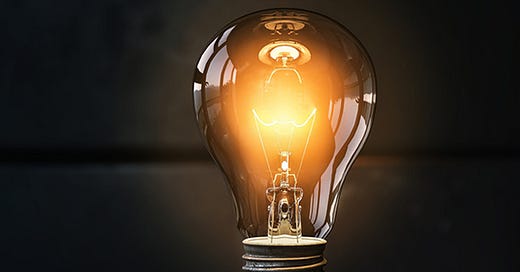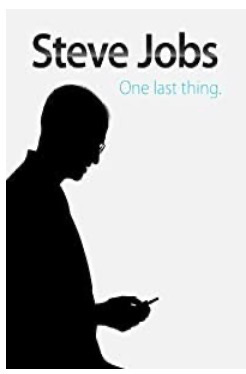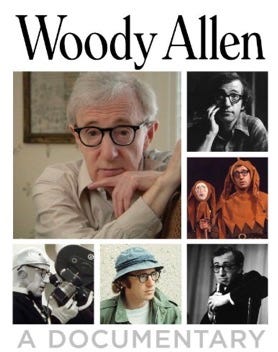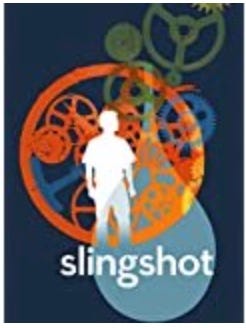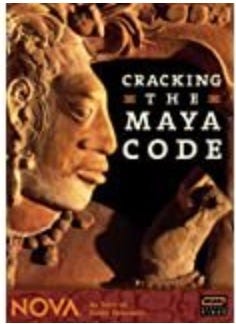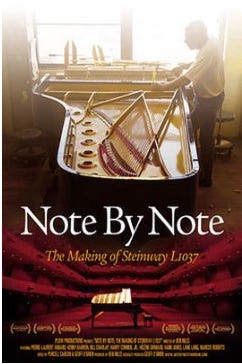Image by Arek Socha from Pixabay
When it comes to timeless, useful, and powerful life advice, this gem from the documentary movie Steve Jobs: The Lost Interview (2012) is worth remembering:
“Expose yourself to the best things that humans have done, and then try to bring those things into what you are doing.”
It’s one of those ideas that seems obvious at first glance, but not obvious enough to have occurred to most people beforehand. Nevertheless, few things are as self-evident. Why should you waste your time, your short life, on things that are not “the best” in this world? Fortunately, great things clearly stand out, as do the mediocre, the bad, and the ugly. If you want a kind of joyful life that is full of wonder and enchantment, seek out the work of the truly talented and dedicated. It’s pretty simple. One great way to get exposed to the extraordinary achievements of others is by watching documentary films.
Here are six that can set you on a path of discovery:
Steve Jobs: One Last Thing (2011) is a documentary directed by Sarah Hunt and Mimi O’Connor about Apple co-founder Steve Jobs that covers his collaboration with Steve Wozniak, another co-founder and the inventor of the Apple I and Apple II computers; his work with Dean Hovey on the design of the one button mouse; his influence on the design of computer fonts; his envisioning of the iPad; his founding of NeXT with funding from Ross Perot; his buying of Pixar; and his remaking of Apple with the iMac, the iPod, iTunes and the iPhone.
Life Lesson:
You don’t just have to be a consumer; you can be a creator.
Steve Jobs: “When you grow up, you tend to get told that the world is the way it is, and your — your life is just to live your life inside the world: try not to bash into the walls too much, try to have a nice family life, have fun, save a little money. That’s a very limited life. Life can be much broader once you discover one simple fact, and that is: Everything around you that you call life was made up by people that were no smarter than you, and you can change it, you can influence it, you can build your own things that other people can use. Once you learn that, you’ll never be the same again.”
Woody Allen (2012) is a documentary written and directed by Robert B. Weide about comedian, filmmaker, and writer Woody Allen (Allan Stewart Konigsberg), a man who made a movie every year for over 40 years, including Annie Hall (1977), which won four Academy Awards; Hannah and Her Sisters (1986) and Midnight in Paris (2011), both of which won for Best Original Screenplay; and Vicky Cristina Barcelona (2008), which won the Golden Globe Award for Best Motion Picture.
Life Lesson:
Nurture whatever talent or skill you have; in the future someone might pay you for it.
Eric Lax (Biographer): “There was a press agent, a public relations man named David Alber and his job was to come up with funny lines to put in the mouths of his clients. And he hired Woody to come at $25 week after school to write jokes … By the time he was 16 or 17, he was making more than his parents and has been regularly employed everyday of his life since.”
Woody: “And I was doing about 50 jokes a day for a long time. It was not hard. .. From there I was asked to write some jokes for the Arthur Godfrey Program, for Peter Lind Hayes and Mary Healy — they did a radio program. And that eventually got to Herb Shriner, who was a wonderful comedian, and I wrote for him. And I never really stopped. I was never out of work. […] If you’re a joke-maker, it’s hard not to make jokes… I can’t draw a horse or anything else, but I can write jokes, and it’s hard not to write them. I mean, if I walk down the street, it’s almost — it’s like my normal conversation. You know, it just comes out that way.”
SlingShot (2014) is a documentary directed by Paul Lazarus about the life and work of Dean Kamen, the inventor of the Segway Personal Transporter, the founder of FIRST engineering competitions, the developer of Slingshot, a portable water purification system, and the founder of DEKA, a research and development corporation.
Life Lesson:
“Bureaucracy is the art of making the possible impossible.”
– Javier Pascual Salcedo
Dean Kamen: “I made a machine that I thought would help people with healthcare. That’s my day job. So I went to my medical company clients. They can help. [But] They pretty much said, ‘We can’t help you. We’d love to support it. We’ll help you with money. But, Dean, we can’t get this stuff to these places, either. We’ll see what we can do.’ I went to governments. Maybe that’s what they’re for. When capitalism doesn’t work, aid organizations, NGOs. Well, they like to deal with big-scale stuff. They also might help with funding, they told me, but these big organizations don’t have people that go out to these little villages. They don’t have an efficient distribution channel. I went to the United Nations, said ‘I’ve got this box. Let’s figure out how to help get it out there.’ Their basic answer was, ‘good for you, we’re rooting for you. But we don’t do that. We don’t distribute products. We don’t build sustainable micro-economic systems. We don’t lend people money; we don’t make entrepreneurs. That’s not what we do.’ I was somewhat disappointed. […] I’ve been given the opportunity to talk to the entire board of directors of the Coca-Cola Company about using our vapor compression distiller to solve the major global health problem: bad water. […] The Coca-Cola Company has bottling operations in 206 countries, which is more than the number of countries that are admitted into the United Nations.”
With Great Power: The Stan Lee Story (2010) is a documentary co-written and co-directed by Nikki Frakes and Will Hess about Stan Lee, the co-creator, along with Jack Kirby, of a number of comic book heroes including the Fantastic Four, the Hulk, the X-Men, as well as Iron Man; and with Steve Ditko, Spider-Man.
Life Lesson:
“I faced it all, and I stood tall; and did it my way.”
Stan Lee: Doing comics was like, you were on the bottom rung of the creative totem pole, so to speak. Here I am, a grown man. I was in my 30s, and I’m doing juvenile things. Most of my neighbors: they were stockbrokers, they were bankers, they were businessmen, they were doctors, they were lawyers. They didn’t take me seriously. What kind of reference was the fact that you had been writing comics? So I kept staying there because I had a wife and a baby, a child. I didn’t know where else to go. But finally, I was ready to quit by about 1960 or ’61. I had been doing it for 20 years. And I said to my wife, ‘look, I’m sure there’s something I can do. I’ll try to write a novel or something.’ And she said, ‘Stan, if you want to quit, why don’t you first do one comic book the way you’d like to do it for a slightly older audience? Write it the way you feel like writing it. Get it out of your system. The worst that can happen is you’ll be fired, but you want to quit anyway.’ When Joan finally said, ‘why don’t you do one book the way you’d like to do it?’ It was like a lightbulb exploded over my head.
Breaking the Maya Code (2008) is a documentary written and directed by David Lebrun, based on the book by Michael Coe, about the researchers – including Constantine Rafinesque, Ernst Förstemann, Eric Thompson, Tatiana Proskouriakoff, Heinrich Berlin, Cyrus Thomas, Yuri Valentinovich Knorosov, Merle Greene Robertson, Linda Schele, Peter Mathews, Floyd Lounsbury, Alberto Ruz, Elizabeth Benson, David H. Kelley, David Stuart and Justin Kerr – who were involved in a 200 year struggle to decipher the writing system of the ancient Maya, a 4,000 year-old Mesoamerican civilization.
Life Lesson:
It takes many different kinds of people to solve a complex problem.
Michael Coe: “Ernst Förstemann is a perfect example of how somebody does not have to put on a pith helmet and carry a machete to make great discoveries. Förstemann did this sitting in a dusty office in a dusty library. He traveled in his mind and managed to reach the mind of the Maya.”
Narrator: “The Maya had invented the concept of zero, and they arranged their numbers in columns to designate place notation. Our decimal system counts by tens and powers of ten. Förstemann realized that the Maya used a base 20 system, counting by 20s and powers of 20. With this system, they could express and manipulate extremely large numbers. Having grasped their mathematics, Förstemann discovered Maya astronomy. He proved that one section of the Dresden [codex] is an incredibly precise record and prediction table of eclipses, accurate to within 7 minutes over 32 years. Another section he identified as tables tracking the cycles of the planet Venus, with an error of only 2 hours over 400 years.”
Note by Note: The Making of Steinway L1037 (2007) is a documentary directed by Ben Niles about the process involved in handcrafting a Steinway concert grand piano,that also includes interviews with musicians Harry Connick Jr., Hank Jones, Hélène Grimaud, Pierre-Laurent Aimard, and Lang Lang.
Life Lesson:
There is joy in working with your hands.
Prenta Ljucovic (Case Maker): “I enjoyed building the piano. If I don’t work, if I don’t work physically, then I get nervous. I want to work physically. I want to — I like to work hard, put it this way.”
Eddy Salvodon (Plate Fitter): “When you work with your hands, you know what to do, you know what you’re touching. Any mistake, any problem, you know. You touch with your hand; you know what the problem is.”
The second half of Steve Jobs’ advice is to bring “the best things that humans have done… into what you are doing.” Naturally then, one must find something to do. As the mother of a lawyer, Pablo Fajardo, featured in the movie Crude (2009) says,
“Sin hacer nada, no sirve para nada. Hay que siempre hacer algo,” which roughly translates to: “If you do nothing, you’re a good-for-nothing. You always have to do something.”
Determining what to focus on may be a challenge in itself, but one method to feel inspired and motivated is to view a wide variety of documentary films that feature truly great work.
Once one figures out what to do, it follows from Job’s advice that the next step is to discover who the best people are in your area of interest and learn as much as possible about their work and their process, how they overcame challenges, and what their best accomplishments are. Then, the final step is to apply what has been learned into your own work.
Of course, it’s worth remembering that one can learn from anybody, not just the most successful. It also may be easier to find what it is you want to do by expanding and deepening your interests. Again, an excellent way to do all this is to track down well-made documentary films. Doing so will surely leave you better off. Enjoy!
Visit the moviewise catalogue—a searchable database of one sentence movie summaries, movie quotes, and movie wisdom—for movie recommendations.
Also visit the moviewise store. Get a t-shirt, bag, or pillow with your favorite #LifeLesson from a movie. Reply to this or leave a comment below to make a request.

